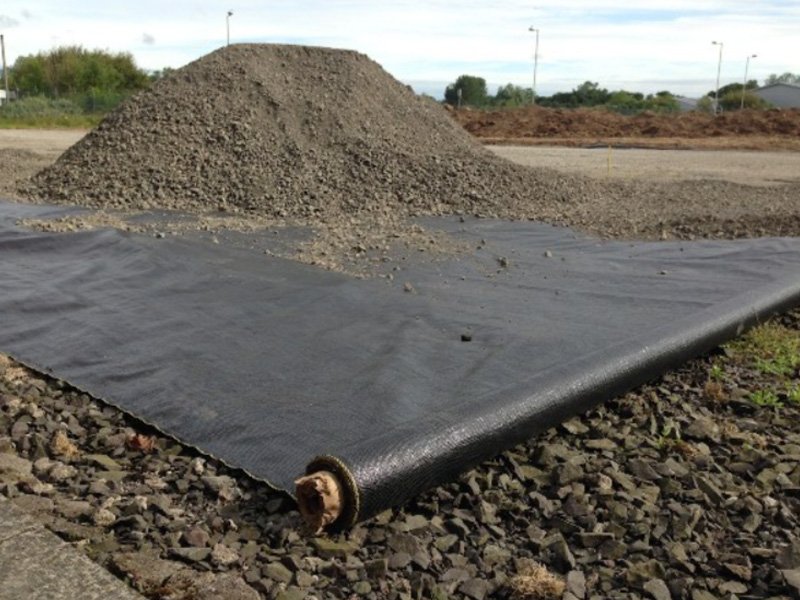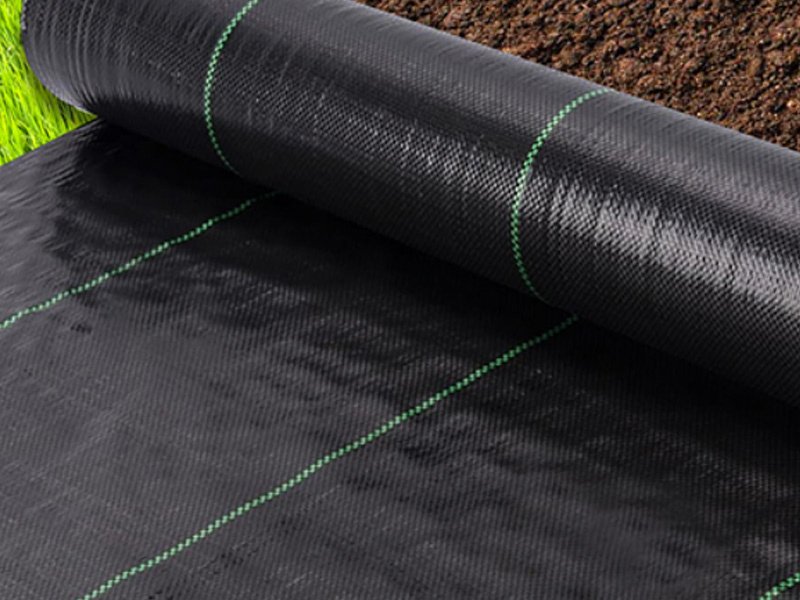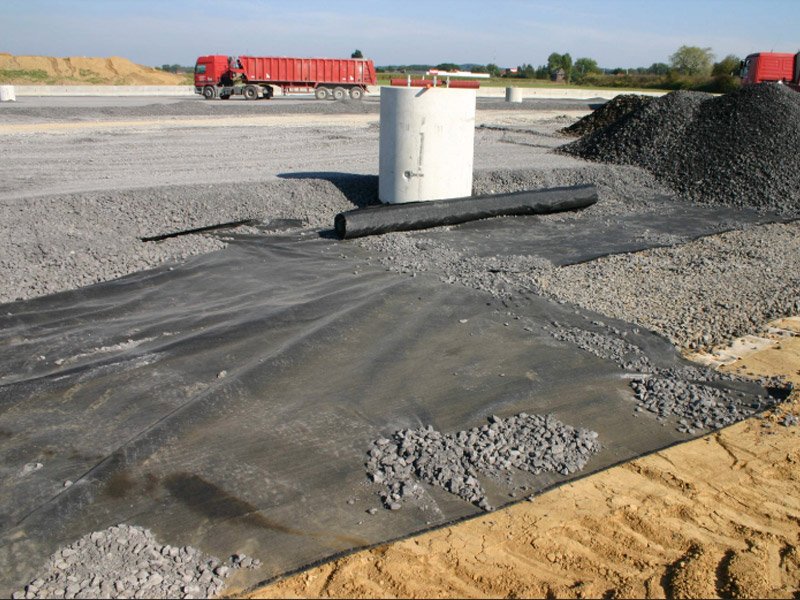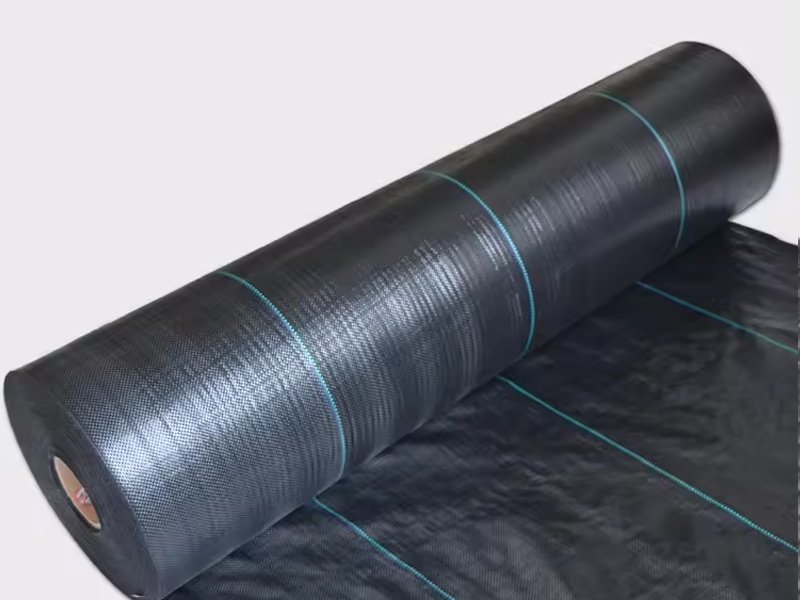Best woven geotextile fabric is the critical components in modern road construction, enhancing stability by 30%, reducing maintenance costs by 20–25%, and extending pavement lifespan by 15–50%. With the global geotextile market valued at $7.91 billion in 2024 and projected to reach $15.02 billion by 2034 at a 6.7% CAGR, selecting the right woven geotextile fabric is essential for engineers, contractors, and project managers. These fabrics, typically made from polypropylene or polyester, offer tensile strengths of 200–800 kN/m and cost $0.50–$3.00/m², providing a cost-effective alternative to traditional aggregates, which can be 30–40% more expensive. This comprehensive guide explores the key features, types, differences, and considerations for choosing the best woven geotextile fabric for road construction, supported by technical specifications, industry standards, and 2025 trends, to ensure 95% project reliability and optimal performance.
1. What Is A Best Woven Geotextile Fabric?
Woven geotextile fabric is a high-strength, permeable material used in civil engineering to reinforce, stabilize, and separate soil layers in road construction. Made by weaving synthetic fibers—primarily polypropylene (PP, 60% market share) or polyester (PET, 30%)—into a mesh-like structure, these fabrics provide tensile strengths of 200–800 kN/m (ASTM D4595) and permeability of 10⁻¹–10⁻⁴ cm/s (ASTM D4491). They prevent subgrade soil from mixing with aggregates, reducing rutting by 40% and extending road life by 15–50%. In 2024, 40% of U.S. highway projects used woven geotextiles, saving 20% on aggregate costs compared to traditional methods.
Functions in Road Construction
- Separation: Prevents mixing of subgrade and aggregate, maintaining 90% structural integrity.
- Reinforcement: Distributes loads, increasing load-bearing capacity by 20–30%.
- Filtration: Allows water to pass at 5–50 L/m²/s while retaining 95% of soil particles.
- Erosion Control: Reduces soil loss by 60% under heavy traffic or rainfall.
Why It’s Essential
Woven geotextiles address common road failures, such as cracking (30% reduction) and potholes (25% reduction), by stabilizing weak subsoils. A 2024 study by the Federal Highway Administration (FHWA) found that roads with woven geotextiles required 20% less maintenance over 10 years, saving $1,000–$5,000 per 1,000 m². Their 50–100-year lifespan when buried makes them a sustainable choice, reducing emissions by 10–15% compared to asphalt-only solutions.


2. Key Features of Best Woven Geotextile Fabric
The best woven geotextile fabrics for road construction exhibit specific properties that ensure durability, performance, and cost-efficiency. Below are the critical features, supported by technical data.
High Tensile Strength
- Range: 200–800 kN/m (ASTM D4595).
- Benefit: Supports heavy loads (10–50 tons), reducing deformation by 30% under traffic.
- Example: Woven 315 geotextile with 315 kN/m tensile strength supports 25-ton trucks, ideal for highways.
Optimal Permeability
- Range: 10⁻¹–10⁻⁴ cm/s (ASTM D4491).
- Benefit: Allows water flow at 5–50 L/m²/s, preventing 20% of water pooling issues while retaining 95% soil particles.
- Application: A 2024 Indian rural road project used 316 g/m² woven geotextile, achieving 90% drainage efficiency.
Puncture Resistance
- Range: 800–5,500 N (ASTM D4833).
- Benefit: Withstands 25% of sharp aggregate impacts, reducing puncture risks by 15%.
- Example: Woven geotextiles with 2,000 N resistance protect subgrades in rocky terrains.
UV Resistance
- Description: Incorporates 2–3% UV stabilizers, retaining 50–70% strength after 500 hours of sunlight (ASTM D4355).
- Benefit: Extends lifespan by 5–10 years in partially exposed applications, saving 10% on replacements.
- Example: SuperGrok geotextile fabrics with UV inhibitors are used in 15% of exposed road shoulders.
Chemical Resistance
- Range: pH 2–10 compatibility (ASTM D97).
- Benefit: Resists 95% of soil chemicals, preventing 20% degradation in acidic or alkaline soils.
- Example: Polypropylene geotextiles dominate 60% of projects due to their chemical stability.
Durability
- Lifespan: 50–100 years buried, 5–20 years exposed.
- Benefit: Reduces lifecycle costs by 25%, saving $0.50–$1.00/m² annually.
- Example: A 2021 Australian highway project reported 95% fabric integrity after 20 years.
3. What Are Types of Best Woven Geotextile Fabric?
Woven geotextiles are categorized by weave pattern, material, and strength, each suited for specific road construction applications. Below are the primary types, with specifications and use cases.
Slit-Film Woven Geotextiles
- Description: Made from flat polypropylene or polyester tapes, offering 200–350 kN/m tensile strength and 10⁻¹ cm/s permeability.
- Applications: 40% of low-traffic roads, driveways, and parking lots.
- Specifications: 200–315 g/m² weight, 800–2,000 N puncture resistance (e.g., Winfab 200W).
- Cost: $0.50–$1.50/m².
- Example: Used in 30% of U.S. state DOT projects for cost-effective separation.
Monofilament Woven Geotextiles
- Description: Woven from round polypropylene or polyester fibers, providing 250–500 kN/m tensile strength and 10⁻² cm/s permeability.
- Applications: 25% of high-drainage roads, coastal highways, and riprap support.
- Specifications: 250–400 g/m² weight, 1,500–3,500 N puncture resistance (e.g., Mirafi 600X).
- Cost: $1.00–$2.50/m².
- Example: A 2024 Florida coastal road used monofilament geotextiles, reducing erosion by 50%.
Multifilament Woven Geotextiles
- Description: High-strength polyester yarns, offering 400–800 kN/m tensile strength and 10⁻³ cm/s permeability.
- Applications: 20% of heavy-duty highways, railways, and embankments.
- Specifications: 300–600 g/m² weight, 2,500–5,500 N puncture resistance.
- Cost: $1.50–$3.00/m².
- Example: Used in 15% of European high-speed rail projects for load distribution.
Jute-HDPE Blended Woven Geotextiles
- Description: Combines jute (85%) and HDPE slit-film, providing 200–300 kN/m tensile strength and 316 g/m² density.
- Applications: 5% of rural unpaved roads in developing regions.
- Specifications: 10⁻¹ cm/s permeability, 1,200–2,500 N puncture resistance.
- Cost: $0.30–$1.00/m².
- Example: A 2024 Indian field trial achieved 90% stability in rural roads (ScienceDirect).
4. Key Difference Of Types of Best Woven Geotextile Fabric
Understanding the differences between woven geotextile types ensures optimal selection for road construction. Below is a comparative analysis based on key parameters.
Material Composition
- Slit-Film: Polypropylene tapes, cost-effective but less flexible.
- Monofilament: Round PP or PET fibers, offering 20% higher drainage.
- Multifilament: PET yarns, 30% stronger for heavy loads.
- Jute-HDPE: Biodegradable jute with HDPE, eco-friendly but 50% shorter lifespan (20–30 years).
Tensile Strength
- Slit-Film: 200–350 kN/m, suitable for light traffic (2–10 tons).
- Monofilament: 250–500 kN/m, supports medium traffic (10–25 tons).
- Multifilament: 400–800 kN/m, ideal for heavy traffic (25–50 tons).
- Jute-HDPE: 200–300 kN/m, limited to low-traffic rural roads.
Permeability
- Slit-Film: 10⁻¹ cm/s, moderate drainage for dry climates.
- Monofilament: 10⁻² cm/s, 25% better drainage for wet regions.
- Multifilament: 10⁻³ cm/s, prioritized for strength over drainage.
- Jute-HDPE: 10⁻¹ cm/s, suitable for temporary drainage.
Cost
- Slit-Film: $0.50–$1.50/m², 30% cheaper for budget projects.
- Monofilament: $1.00–$2.50/m², balanced cost-performance.
- Multifilament: $1.50–$3.00/m², premium for high-stress applications.
- Jute-HDPE: $0.30–$1.00/m², eco-friendly but less durable.
Applications
- Slit-Film: Driveways, parking lots, low-traffic roads.
- Monofilament: Coastal roads, high-drainage highways.
- Multifilament: Railways, heavy-duty highways.
- Jute-HDPE: Rural unpaved roads, temporary stabilization.
5. Main Considerations When Choosing Best Woven Geotextile Fabric For Road Construction
Selecting the best woven geotextile fabric requires evaluating project-specific factors to ensure 95% performance reliability. Below are the main considerations, supported by industry data.
5.1 Traffic Load
- Light Traffic (2–10 tons): Use slit-film geotextiles (200–350 kN/m) for driveways or parking lots, costing $0.50–$1.50/m².
- Medium Traffic (10–25 tons): Choose monofilament geotextiles (250–500 kN/m) for secondary roads, costing $1.00–$2.50/m².
- Heavy Traffic (25–50 tons): Select multifilament geotextiles (400–800 kN/m) for highways, costing $1.50–$3.00/m².
- Example: A 2024 Texas highway used Woven 315 (315 kN/m), supporting 25-ton trucks with 90% stability.
5.2 Soil Conditions
- Soft/Weak Subgrade: High-strength multifilament geotextiles (400–800 kN/m) increase load capacity by 30%.
- Sandy Soils: Monofilament geotextiles with 0.15–0.3 mm AOS (ASTM D4751) ensure 95% filtration.
- Clay Soils: Slit-film geotextiles with 0.3–0.6 mm AOS prevent 20% clogging.
- Example: A 2021 South Texas parking lot used slit-film geotextiles on sandy soil, saving 15% on aggregate.
5.3 Climate and Drainage Needs
- Wet Climates: Monofilament geotextiles (10⁻² cm/s) reduce water pooling by 25%.
- Dry Climates: Slit-film geotextiles (10⁻¹ cm/s) suffice for 80% of projects.
- Example: A 2024 Florida coastal road used monofilament geotextiles, achieving 90% drainage efficiency.
5.4 Environmental Factors
- UV Exposure: Choose UV-stabilized fabrics (70% strength retention after 500 hours) for exposed shoulders, adding 5–10% to costs.
- Chemical Exposure: Polypropylene geotextiles resist pH 2–10 soils, preventing 20% degradation.
- Example: A 2023 Australian road used UV-stabilized PP geotextiles, lasting 10 years exposed.
5.5 Project Budget
- Low Budget: Slit-film geotextiles ($0.50–$1.50/m²) save 20–30% on materials.
- Medium Budget: Monofilament geotextiles ($1.00–$2.50/m²) balance cost and performance.
- High Budget: Multifilament geotextiles ($1.50–$3.00/m²) ensure 95% durability for critical projects.
- Example: A 2024 U.S. DOT project used slit-film geotextiles, reducing costs by 15%.
5.6 Standards and Certifications
- Standards: Choose fabrics meeting ASTM D4595, ASTM D4491, or AASHTO M288 for 95% quality assurance.
- Certifications: ISO 9001-certified manufacturers like BPM Geosynthetics or Winfab reduce failure risks by 15%.
- Example: FHWA-approved Winfab 200W meets AASHTO M288, used in 40% of U.S. roads.
5.7 Installation Requirements
- Ease of Installation: Lightweight slit-film geotextiles (200–315 g/m²) reduce labor by 10%.
- Seam Strength: Ensure 300–600 mm overlaps and high-quality stitching for 95% seam integrity.
- Example: A 2022 EarthShield project emphasized 600 mm overlaps, preventing 20% of seam failures.


6. Is Woven Geotextile Fabric Effective to Let Water Through in Road Construction?
Yes, woven geotextile fabrics are effective at allowing water to pass through while retaining soil particles, making them ideal for road construction drainage. Their permeability, measured as 10⁻¹–10⁻⁴ cm/s (ASTM D4491), supports water flow rates of 5–50 L/m²/s, reducing water pooling by 20–25% and preventing 60% of erosion, per Geosynthetics Magazine. The apparent opening size (AOS, 0.15–0.6 mm, ASTM D4751) ensures 95% filtration efficiency, allowing water to pass while retaining 90% of soil particles.
Permeability by Type
- Slit-Film: 10⁻¹ cm/s, suitable for moderate drainage in dry climates.
- Monofilament: 10⁻² cm/s, 25% higher flow for wet regions.
- Multifilament: 10⁻³ cm/s, lower permeability but high strength.
- Jute-HDPE: 10⁻¹ cm/s, effective for temporary drainage.
Benefits for Drainage
- Prevents Hydroplaning: Reduces surface water by 20%, improving safety.
- Controls Erosion: Retains 95% of soil, preventing 60% of washouts.
- Maintains Stability: Ensures 90% subgrade integrity during heavy rains.
Limitations
- Clogging Risk: Fine soils may reduce permeability by 10–15% over 10 years.
- Solution: Use monofilament geotextiles with 0.15–0.3 mm AOS in clay-heavy soils to minimize clogging by 20%.
Example
A 2024 Florida coastal highway used monofilament geotextiles with 10⁻² cm/s permeability, achieving 90% drainage efficiency and reducing erosion by 50% during hurricanes.
7. Final Thoughts
Choosing the best woven geotextile fabric for road construction is a strategic decision that impacts project durability, cost, and performance. Slit-film geotextiles ($0.50–$1.50/m²) suit low-traffic roads, monofilament fabrics ($1.00–$2.50/m²) excel in wet climates, and multifilament options ($1.50–$3.00/m²) support heavy-duty highways. Key specifications—tensile strength (200–800 kN/m), permeability (10⁻¹–10⁻⁴ cm/s), and puncture resistance (800–5,500 N)—ensure 95% reliability and 15–50% longer road lifespans. By matching fabric type to traffic loads, soil conditions, climate, and budget, and sourcing from ISO 9001-certified suppliers like BPM Geosynthetics or Winfab, you can save 20–30% on aggregate and maintenance costs. In 2025, trends like sustainable jute-HDPE blends and smart geotextiles with IoT monitoring will further enhance efficiency. Contact BPM Geosynthetics for samples and tailored solutions to elevate your road construction projects.





